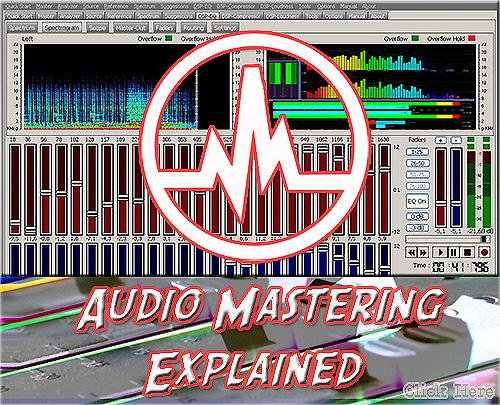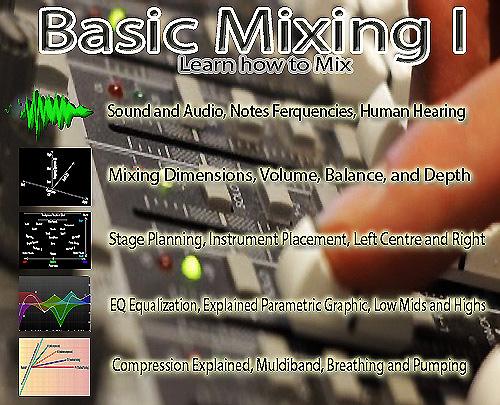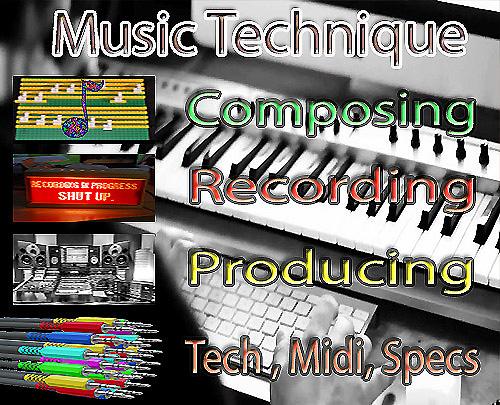Audio Formats
Audio Formats
The list below showcases audio formats that are able to encode audio and compress it in a lossless way ensuring your music is perfectly preserved in digital form.
WAV (WAVeform Audio Format)
The main format for AAMS is WAV format audio files, basically internally AAMS is build with it´s 16 bit 32 Bit audio drivers and 64 Bit internal processing, so WAV format is very compatible.
And musically 16 bit wav is great for normal audio and will achive good sound, the 32 bit wav floating point is really exact and is the main format for more demanding users.
For audio files to be written in a lossless fashion, wav is a good choise, wav can handle also different types of samplerates, like 44.1 Khz or higher.
The WAV format isn't thought of as the ideal choice when choosing a digital audio system for preserving your audio CDs, but still remains a lossless option. However, the files produced will be larger than the other formats in this article because there isn't any compression involved. That said, if storage space isn't an issue then the WAV format has some clear advantages. It has widespread support with both hardware and software. Much lower CPU processing time is required when converting to other formats because WAV files are already uncompressed -- they don't need to be uncompressed before conversion. You can also directly manipulating WAV files (using audio editing software for instance) without having to wait for a de-compression/re-compression cycle in order to update your changes. Short for WAVeform Audio Format, it is normally used in an uncompressed format on the Microsoft Windows platform. This raw audio format, which was developed jointly by IBM and Microsoft, stores audio data in blocks. On the digital music scene, its usefulness has diminished over time with the development of better lossless audio formats, such as FLAC and Apple lossless. It is a standard that will probably be used for some time yet due to its widespread use in professional music recording and is still a very popular format for audio/video applications. The file extension associated with WAV is: .WAV
FLAC (Free Lossless Audio Codec)
The FLAC format (short for Free Lossless Audio Codec) is probably the most popular lossless encoding system which is becoming more widely supported on hardware devices such as MP3 players, smartphones, tablets, and home entertainment systems. It is developed by the non-profit Xiph.Org Foundation and is also open source. Music stored in this format is typically reduced between 30 to 50% of its original size. Common routes to rip audio CDs to FLAC include software media players (like Winamp for Windows) or dedicated utilities Max for example is a good one for Mac OS X.
ALAC (Apple Lossless Audio Codec)
Apple initially developed their ALAC format as a proprietary project, but since 2011 has made it open source. Audio is encoded using a lossless algorithm which is stored in an MP4 container. Incidentally, ALAC files have the same .m4a file extension as AAC, so this naming convention can lead to confusion. ALAC isn't as popular as FLAC, but could be the ideal choice if your preferred software media player is iTunes and you use Apple hardware such as the iPhone, iPod, iPad, etc.
Monkey's Audio
The Monkey's Audio format isn't as well supported as other competing lossless systems such as FLAC and ALAC, but on average has better compression resulting in smaller file sizes. It isn't an open source project, but is still free to use. Files that are encoded in the Monkey's Audio format have the humorous .ape extension! Methods used to rip CDs to Ape files include: downloading the Windows program from the official Monkey's Audio website, or using standalone CD ripping software that outputs to this format. Even though most software media players don't have out-of-the-box support for playing files in the Monkey's Audio format, there is a good selection of plug-ins now available for: Windows Media Player, Foobar2000, Winamp, Media Player Classic, and others. More »
WMA Lossless (Windows Media Audio Lossless) WMA Lossless which is developed by Microsoft is a propriety format that can be used to rip your original music CDs without any loss of audio definition. Depending on various factors, a typical audio CD will be compressed between 206 - 411 MB using a spread of bit rates in the range of 470 - 940 kbps. The resultant file that is produced confusingly has the .WMA extension which is identical to files that are also in the standard (lossy) WMA format. WMA Lossless is probably the least well supported of the formats in this toplist, but could still be the one you choose especially if you use Windows Media Player and have a hardware device that supports it such as a Windows phone for example.
Uncompressed Formats
WAV and AIFF: Both WAV and AIFF are uncompressed formats, which means they are exact copies of the original source audio. The two formats are essentially the same quality; they just store the data a bit differently. AIFF is made by Apple, so you may see it a bit more often in Apple products, but WAV is pretty much universal. However, since they're uncompressed, they take up a lot of unnecessary space. Unless you're editing the audio, you don't need to store the audio in these formats.
Lossless Formats
FLAC: The Free Lossless Audio Codec (FLAC) is the most popular lossless format, making it a good choice if you want to store your music in lossless. Unlike WAV and AIFF, it's been compressed, so it takes up a lot less space. However, it's still a lossless format, which means the audio quality is still the same as the original source, so it's much better for listening than WAV and AIFF. It's also free and open source, which is handy if you're into that sort of thing.
Apple Lossless: Also known as ALAC, Apple Lossless is similar to FLAC. It's a compressed lossless file, although it's made by Apple. Its compression isn't quite as efficient as FLAC, so your files may be a bit bigger, but it's fully supported by iTunes and iOS (while FLAC is not). Thus, you'd want to use this if you use iTunes and iOS as your primary music listening software.
Lossy Formats
APE: APE is a very highly compressed lossless file, meaning you'll get the most space savings. Its audio quality is the same as FLAC, ALAC, and other lossless files, but it isn't compatible with nearly as many players. They also work your processor harder to decode, since they're so highly compressed. Generally, I wouldn't recommend using this unless you're very starved for space and have a player that supports it.
For regular listening, it's more likely that you'll be using a lossy format. They save a ton of space, leaving you with more room for songs on your portable player, and—if they're high enough bitrate—they'll be indistinguishable from the original source. Here are the formats you'll probably run into:
MP3: MPEG Audio Layer III, or MP3 for short, is the most common lossy format around. So much so that it's become synonymous with downloaded music. MP3 isn't the most efficient format of them all, but its definitely the most well-supported, making it our #1 choice for lossy audio. You really can't go wrong with MP3.
AAC: Advanced Audio Coding, also known as AAC, is similar to MP3, although it's a bit more efficient. That means that you can have files that take up less space, but with the same sound quality as MP3. And, with Apple's iTunes making AAC so popular, it's almost as widely compatible with MP3. I've only ever had one device that couldn't play AACs properly, and that was a few years ago, so it's pretty hard to go wrong with AAC either.
Ogg Vorbis: The Vorbis format, often known as Ogg Vorbis due to its use of the Ogg container, is a free and open source alternative to MP3 and AAC. Its main draw is that it isn't restricted by patents, but that doesn't affect you as a user—in fact, despite its open nature and similar quality, it's much less popular than MP3 and AAC, meaning fewer players are going to support it. As such, we don't really recommend it unless you feel very strongly about open source.
WMA: Windows Media Audio is Microsoft's own proprietary format, similar to MP3 or AAC. It doesn't really offer any advantages over the other formats, and it's also not as well supported. There's very little reason to rip your CDs into this format.
Alfabetical Order
3gp = multimedia container format can contain proprietary formats as AMR, AMR-WB or AMR-WB+, but also some open formats.
act = ACT is a lossy ADPCM 8 kbit/s compressed audio format recorded by most Chinese MP3 and MP4 players with a recording function, and voice recorders.
aiff = Apple standard audio file format used by Apple. It could be considered the Apple equivalent of wav.
aac the Advanced Audio Coding format is based on the MPEG-2 and MPEG-4 standards. Are usually ADTS or ADIF containers amr AMR-NB audio, used primarily for speech.
au = Sun Microsystems the standard audio file format used by Sun, Unix and Java. The audio in au files can be PCM or compressed with the µ-law, a-law or G729 codecs.
awb = AMR-WB audio, used primarily for speech, same as the ITU-T's G.722.2 specification.
dct = NCH Software. A variable codec format designed for dictation. It has dictation header information and can be encrypted (as may be required by medical confidentiality laws). A proprietary format of NCH Software.
dss = Olympus. Files are an Olympus proprietary format. It is a fairly old and poor codec. Gsm or mp3 are generally preferred where the recorder allows. It allows additional data to be held in the file header.
dvf = A Sony proprietary format for compressed voice files; commonly used by Sony dictation recorders.
flac = File format for the Free Lossless Audio Codec, a lossless compression codec.
gsm = Designed for telephony use in Europe. Is a very practical format for telephone quality voice. It makes a good compromise between file size and quality. Note that wav files can also be encoded with the gsm codec.
iklax = An iKlax Media proprietary format, the iKlax format is a multi-track digital audio format allowing various actions on musical data, for instance on mixing and volumes arrangements.
ivs = 3D Solar UK Ltd. A proprietary version with Digital Rights Management developed by 3D Solar UK Ltd for use in music downloaded from their Tronme Music Store and interactive music and video player.
m4a = An audio only MPEG4 file. Used by Apple for unprotected music downloaded from their iTunes Music Store. Audio within the m4a file is typically encoded with AAC, although lossless ALAC may also be used.
m4p = Apple. A version of AAC with proprietary Digital Rights Management developed by Apple for use in music downloaded from their iTunes Music Store.
mmf = Samsung. a Samsung audio format that is used in ringtones.
mp3 = MPEG Layer III Audio. Is the most common sound file format used today.
mpc = Musepack or MPC. Formerly known as MPEGplus, MPEG+ or MP+. Is an open source lossy audio codec, specifically optimized for transparent compression of stereo audio at bitrates of 160–180 kbits.
msv = Sony. A Sony proprietary format for Memory Stick compressed voice files.
ogg / oga = Xiph.Org Foundation. A free, open source container format supporting a variety of formats, the most popular of which is the audio format Vorbis. Vorbis offers compression similar to MP3 but is less popular.
opus = Internet Engineering Task Force. A lossy audio compression format developed by the Internet Engineering Task Force (IETF) and made especially suitable for interactive real-time applications over the Internet. As an open format standardised through RFC 6716, a reference implementation is provided under the 3-clause BSD license.
ra/rm = RealNetworks. A RealAudio format designed for streaming audio over the Internet. The ra format allows files to be stored in a self contained fashion on a computer, with all of the audio data contained inside the file itself.
raw = a raw file can contain audio in any format but is usually used with PCM audio data. It is rarely used except for technical tests.
sln = S Linear format used by Asterisk.
tta = The True Audio, real-time lossless audio codec.
vox = The vox format most commonly uses the Dialogic ADPCM (Adaptive Differential Pulse Code Modulation) codec. Similar to other ADPCM formats, it compresses to 4-bits. Vox format files are similar to wave files except that the vox files contain no information about the file itself so the codec sample rate and number of channels must first be specified in order to play a vox file.
wav = Standard audio file container format used mainly in Windows PCs. Commonly used for storing uncompressed (PCM), CD-quality sound files, which means that they can be large in size—around 10 MB per minute. Wave files can also contain data encoded with a variety of (lossy) codecs to reduce the file size (for example the GSM or MP3 formats). Wav files use a RIFF structure.
wma = Microsoft. Windows Media Audio format, created by Microsoft. Designed with Digital Rights Management (DRM) abilities for copy protection.
wv = Format for wavpack file.

Denis van der Velde
AAMS Auto Audio Mastering System
www.curioza.com






























































